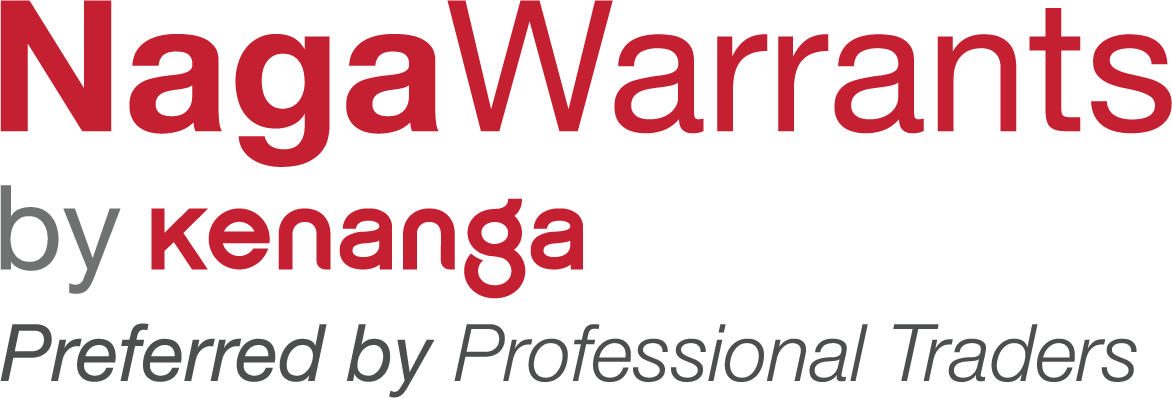FAQ
FAQ
- What is a Structured Warrant?
- How do I trade in Structured Warrants?
- What are the ingredients of a Warrant?
- How do Issuers price warrants?
- What is the size & duration of a new issuance?
- Can you teach me the formula to price a warrant myself?
- What is the difference between Liquidity vs Turnover?
- What if the warrant I have chosen has no traded volume?
1. What is a Structured Warrant?
A structured warrant gives you the right, but not the obligation, to buy or sell an underlying asset at a specific price and time.
Think of it like a turbocharged sports car that can help you accelerate your investment returns, so you need the right information & real-life experience to handle it well.
2. How do I trade in Structured Warrants?
To trade in structured warrants, you will need to open a CDS brokerage account and work with a licensed broker.
You can then search for available warrants on https://www.nagawarrants.com/naga-scanner and trade them via your online trading platform or through your broker.
3. What are the ingredients of a Warrant?
Warrants consist of 6 components - Underlying Asset Price, Exercise Price, Volatility, Time to Expiry, Interest Rate, and Dividends.
Underlying Asset Price: The underlying asset of a structured warrant is like the engine of a car. Just as the engine powers the car, the underlying asset drives the value of the warrant. The type of engine you choose affects the car's performance, just as the underlying asset affects the warrant's value.
Exercise price: The strike or exercise price of a structured warrant is like the promised price of a car. If the car’s current price > exercise price, you would probably choose to exercise the warrant where you could buy the car at a cheaper price than the current market price.
Time to Expiry: The expiration date of a structured warrant is like the expiration date on a carton of milk. Just as milk becomes closer to spoiling as it approaches the expiration date; a structured warrant reduces in value as it approaches the expiration date.
It's important to pay attention to the expiration date (and more importantly, the “Last Trading” date) and make a decision before the warrant becomes worthless.
Volatility: Measures the dispersion of stock price returns. As volatility increases, the likelihood of a stock expiring in-the-money (ITM) or out-the-money (OTM) increases. However, the owners of call warrants benefit from underlying price increase but with limited downside risk. Thus, the higher the volatility in the pricing model, the higher the price of the call and put warrants will be.
Interest Rate: When general interest rate increases, the expected return required by investors from the stock tends to increase. This increase cost of fund results in the increase the value of a call option and reduce the value of a put option.
Dividend: Issuers take into account expected dividends from the underlying in determining the price of a warrant. If the dividend payout is in line with investor expectations, warrant price will be unaffected.
However, if the dividend payout is more than expected, the underlying price will decline more than expected on ex-dividend date, which is bad news for the value of call warrants and good news for the value of put warrants.
You may refer to Issuers Announcements on Bursa Malaysia -
https://www.bursamalaysia.com/market_information/announcements/structure_warrants
4. How do Issuers price warrants?
The Issuers at Kenanga price European-style warrants using the Black-Scholes Option Pricing Model. The Issuer uses mathematical models to calculate the theoretical value of the warrant based on the underlying asset's spot price, volatility of the stock price, time to expiration, and other factors listed above.
5. What is the size & duration of a new issuance?
According to Bursa Listing Requirements, minimum issue size of warrants must be at least RM5 million and tenure between
- 6 months to 5 years: for equity-based structured warrants
- 3 months to 5 years: for index-based structured warrants
The underlying stock must also fulfil both Bursa and SC (Securities Commission) eligibility criteria, which includes:
- daily market cap of at least RM500 million, in the immediate past 3 months
- or RM3 billion for a newly listed corporation.
For more information, please visit the link below:
CHAPTER 5 - STRUCTURED WARRANTS
6. Can you teach me the formula to price a warrant myself?
Pricing a warrant is straightforward, but there will be two key components which you will be missing - interest rate & dividends. You may wish to input your own assumptions of the interest and dividend rates to derive the target price of the warrant.
For fair price & terms of a warrant, we suggest you visit https://www.nagawarrants.com/naga-matrix that contains a more interactive and up-to-date pricing of the warrants you are trading.
7. What is the difference between Liquidity vs Turnover?
Liquidity: Available units to sell and buy warrant at any time
Turnover: Total traded value of a warrant
As an investor, liquidity allows you to enter or exit a position via the existence of Market Makers aka Liquidity Providers. By contributing to both sides of the bid/ask, Market Makers allow warrants to have no traded volume, and yet be highly liquid.
8. What if the warrant I have chosen has no traded volume?
Not to worry! As issuers of warrants, we are also the Market Maker. This means that we are always ready to provide liquidity by posting bid and ask quotes throughout the day as long as the warrant is listed.



